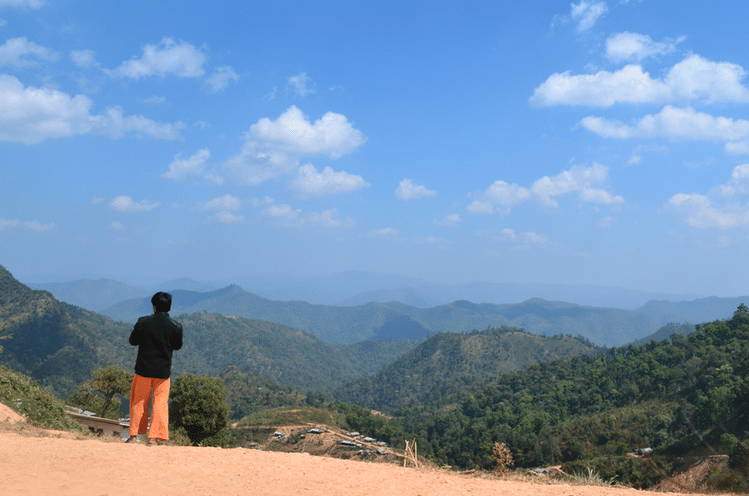Help our local partners realise their vision of hope for their communities

Travelling to Burma as a tourist has been called a ‘moral minefield’ (The Irrawaddy), but tourism has been on the rise in Burma since the country opened up to tourists at the start of the 1990s. Guest blogger Shona Buchanan explores the intense debate surrounding this topic.
In 1992, the government set up a Ministry of Tourism and Hotels, before officially opened to tourists in 1996, naming the year ‘Visit Myanmar Year’ and aiming to attract half a million visitors. Aung San Suu Kyi, and her party the National League of Democracy (NLD), called for a tourism boycott in response, stating that tourists should not visit ‘until Burma is a freer and happier country’.
Burma’s ruling military junta was replaced by a civilian government in 2011, but the army retains huge influence, and continues to negatively effect the country’s human rights record. When Aung San Suu Kyi was released from house arrest in 2011, the NLD changed its position to argue that while the human rights situation has not improved, they now ‘welcome responsible and independent tourism while warning about the negative consequences that misinformed and injudicious tourism can lead to’ (InfoBirmanie).
However, the argument continues, with passionate advocates on either side of the debate. Some believe that if tourists conduct themselves responsibly, tourism can bring many ‘very real benefits’ to the people of Burma (Travel the Unknown), including bringing money to the local population, expanding the population’s knowledge of the outside world, and expanding the outside world’s knowledge of the situation in Burma.
In contrast, those who are more opposed to tourism in Burma argue that tourists’ money usually ends up supporting the military regime and rather than the local population, and that tourism shows support for the government’s regime. Many also claim that increasing human rights violations have been committed in order to fuel and support the growing tourism industry, including forced labour used in road building and other infrastructure designed to enable tourism.
Aung San Suu Kyi herself has refuted the argument that tourists could help the human rights situation: “Burmese people know their own problems better than anyone else. They know what they want – they want democracy – and many have died for it. To suggest that there’s anything new that tourists can teach the people of Burma about their own situation is not simply patronizing – it’s also racist.”
While tourists flock to some parts of Burma, other areas (such as those where HART’s partners are located) remain off limits – hidden from the eyes of the tourists, and the world. In these areas, the human rights abuses of the regime continue, as reported by HART following a visit in February of this year (please read the visit report, available here, or to download at the bottom of this page).
Proponents on both sides of the tourism debate tend to convey the immorality of visiting Burma in a tour group, as this is the method which gives the most money to the government, and helps the local population the least.
A recent report on Tourism in Burma by the French NGO InfoBurmanie sets out in detail some of the other ways in which tourism is harming rather than helping Burma. Firstly, they have compiled a list of government-associated hotels and airlines, through which tourists’ money contributes directly to the abusive regime. Secondly, they have reported on undercover police, who question locals who speak to foreigners. Therefore, tourists in Burma can be putting locals at risk by talking to them. InfoBurmanie has also evaluated the devastation that tourism has directly brought upon the people of Burma. This is through the destruction of homes, restructuring of historic relics and temples, and use of forced labour in order to build new roads and infrastructure. Finally, it maps out the accessible tourist areas of Burma, conveying the proportion of the country still closed to the outside world. Tourists can easily miss seeing the huge problems that still exist but are hidden from tourists.
In conclusion, if an individual decides to travel to Burma, it is essential that they fully inform and educate themselves before they go on the country’s situation, minimize the amount of money channeled through the government, strive to find the Burma beyond the holiday brochures, and bring the reality back home. Rather than believing we, as tourists, are opening Burma’s eyes to the outside world, we must open our eyes to Burma. Tourism ‘brings both joy and tears to Burma’ (The Irrawaddy), and must not be entered into lightly, but undertaken with extensive research and great thought.